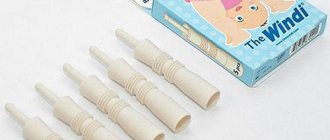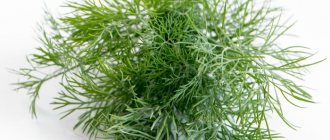Fermented milk complementary foods are introduced into a child’s diet starting at 8–9 months. The first thing in line is usually kefir. Of course, you can purchase it at your nearest store or pharmacy. But the quality of this product is unknown. But kefir prepared at home will meet the highest requirements, and the guarantee for this is mother’s good hands.
There are many recipes for making kefir.
At home, kefir is prepared from whole milk (not store-bought), baked and pasteurized. The base (sourdough) can be kefir itself, sour cream or starter cultures from the pharmacy (the most common are Narine and bifidobacteria).
The preparation and use of kefir will be successful if you adhere to the following recommendations:
- It is better to cool milk indoors; outdoors the taste of sourdough and kefir will change.
- Use baby kefir - it contains more useful substances.
- For fermentation and storage, you must use sterilized glass containers.
What are starters needed for?
Starter products are most often used as a means for the prevention and treatment of the digestive system. Sourdoughs have the following properties:
- lower blood cholesterol levels;
- help remove toxins;
- help reduce the proliferation of pathogenic bacteria inside the intestines;
- are a source of live bacteria that have a beneficial effect on the intestinal microflora;
- helps to increase immunity and resistance of the child’s body to various diseases;
- nourish the body with useful microelements and minerals.
Self-prepared fermented milk products using starter cultures will be useful not only for children, but also for their parents.
At what age should it be given?
There is a difference between breastfed children (complementary food for breastfeeding children) and formula-fed children (complementary food for formula-fed children). The former can begin to receive this fermented milk product from 8 months, the latter a little earlier from 7. What is the reason for this, although not significant, difference? A baby's nutritional needs are different. He needs completely different mineral and protein components, so the child is able to cope with taking this drink only after introducing cereals, vegetable purees, and fruits into his diet. This most often happens when the baby reaches 8 months.
Do not forget that the baby has his own opinion; the baby may refuse to drink kefir because it does not suit his taste preferences, because kefir has a sour taste. To somehow solve this problem, pediatricians allow it to be sweetened a little with an apple or banana. It is not recommended to use sugar for these purposes, because Sugar sharply reduces the benefits of this product.
How to give?
When introducing kefir into a child’s diet, you should follow exactly the same rules as when introducing any other dish. It is worth starting complementary feeding gradually. You start giving a teaspoon, and then increase the dose, bringing it to a volume of 200 ml per day.
How to choose a starter?
Firstly, it must be said right away that it is very difficult to prepare a fermented milk product suitable for a child’s body at home without starter cultures. Therefore, if you want to give your child a high-quality product with medicinal properties, then you need to choose special preparations.
Choosing a sourdough starter for infants is a very responsible matter; not all such products are suitable for them. The four most famous manufacturers, trusted by most parents:
- Narine is from a Ukrainian pharmaceutical company and can be purchased at pharmacies and supermarkets;
- Bacterial starter cultures "Alba-Timm". A quality product that, unfortunately, is not often seen on store or pharmacy shelves. Many mothers order this sourdough starter online;
- Simbiter is a sourdough starter sold exclusively in pharmacies;
- “Good Food” starters from Italian producers. You can purchase both in stores and on the official Internet website.
Sourdoughs are recommended to be used as complementary foods as a therapeutic and prophylactic agent for the baby’s digestive system. They can also be used for making kefir, yogurt, and cottage cheese.
When choosing a starter, firstly, you need to make sure that the product complies with GOST. Then you need to decide which product you need. Here you should be guided by the child’s age, his individual characteristics, usual diet, and state of health.
When choosing, special attention should be paid to the composition of the product, in particular the indicator of colony-forming units . A starter with a high CFU rate will be most beneficial for babies. As you know, more than half of the beneficial bacteria die in the acidic environment of the stomach, so you need to choose a product with the highest rate.
Making kefir for your baby at home
Kefir is a fermented milk drink made from whole or skim milk by fermentation using kefir grains. The drink is obtained with a uniform consistency, snow-white color with a slight release of carbon dioxide.
Translated from the Caucasian, “kefir” is translated as “health”. Is the drink really so beneficial for the body, or is it a myth?
The advantage of the fermented milk ingredient is that the product is absorbed much better than milk. Thanks to a certain combination of beneficial microorganisms, the drink brings invaluable benefits to children and adults:
- Improves food digestibility. Children's kefir allows you to extract the maximum amount of nutrients and vitamins from meat components, fruits and vegetables, and cereals.
- A large number of bacteria have an antiseptic effect and have a beneficial effect on the microflora of the gastrointestinal tract. It is for this reason that many doctors recommend drinking the drink for digestive system disorders in addition to drug treatment.
- Bacteria prevent the development of pathogenic microflora, and also prevent the processes of rotting and fermentation. Allows you to reduce the accumulation of gases in the baby's body.
- Strengthens intestinal motility, thereby reducing the risk of constipation, eliminating weak activity of the digestive organs.
- It has antioxidant properties, allowing you to remove harmful, toxic compounds from the body. Relevant for children who have undergone surgery or a serious illness.
- Restores intestinal microflora. Recommended for use in case of dysbacteriosis.
- Strengthens bone tissue due to the presence of calcium and vitamin D.
It is especially recommended for children to include kefir if they have diabetes. When properly combined with fresh fruit, the drink will replace confectionery sweets.
As soon as the child turns six months old, pediatricians recommend introducing complementary foods. Every two weeks, if the baby does not have allergies or other negative reactions, a new product appears on the menu. After some time, the child is given kefir to try.
And here parents have many questions, starting from how many months can kefir be introduced into the baby’s menu, and ending with which company to buy or prepare the drink themselves. Some parents are skeptical about kefir, explaining that the child is still too small for this product and it is better to try milk.
Pediatricians refute this theory: children under one year old should not be given milk, but kefir will be not only tasty, but also a healthy addition to other dishes.
Kefir is an important and healthy product in baby food. However, parents should have an idea of whether regular kefir can be given to their children, as well as when to introduce it into the diet. It is equally important to choose only high-quality kefir for your child.
1 The benefits of kefir2 The harm of kefir for children3 How to make kefir at home4 Summary for parents5 Note to mom: Kefir is one of the most healthy fermented milk products for both adults and children.
This natural antioxidant has a beneficial effect on the digestive system, normalizes intestinal microflora and strengthens the immune system.
From birth, children need nutrients for normal growth and development. They get all this from their mother's milk. But there comes a time when the child must also receive fermented milk products. Today our article will tell you about one of them - kefir.
From the moment a child is born, parents try to give him only the best: clothes, toys, hygiene products.
Particular attention is paid to food - it must be natural, enriched with all necessary nutrients and valuable microelements.
Hippocrates also said: “You are what you eat,” and therefore there is no doubt about the correctness of the selective approach to compiling a children's menu.
Oh, wonderful, airy, delicious, magnificent kefir. A lot can be said about the beneficial properties and advantages of this fermented milk product. This product is very useful for children, but not every mother manages to feed her baby kefir. In this article we’ll talk about how to make kefir at home and feed it to your baby.
Today we have to find out at what age you can give your child kefir. In fact, answering this question is not as simple as it seems. Why? There are many reasons for this. Firstly, children's diets are individual.
What does every mother need to know about complementary feeding and kefir? How should a baby eat at 6-7 months? The answers to all these questions will be found below.
1 Is kefir healthy?2 At what age can children have kefir?3 Precautionary measures4 Useful recipes4.1 Homemade kefir4.
2 Kefir Panna-Kota No one doubts the benefits of kefir for adults, but should it be given to children? What health problems may arise after babies consume this product? We invite you to get to know kefir better and learn more about its properties and features. At the end of the article, you will traditionally find a selection of wonderful recipes for healthy, tasty and inexpensive dishes.
Many young mothers believe that dairy and fermented milk products should be introduced into the diet of an infant first of all - after all, he already eats milk (or formula), which means that there will certainly be no harm from fermented milk! But in fact, this is nothing more than a common misconception. Take kefir, for example...
Kefir is one of the healthiest fermented milk products. It has a beneficial effect on the gastrointestinal tract, cleansing it of harmful bacteria. It improves the functioning of the liver, kidneys, heart, and strengthens the body's protective properties. An absolutely irreplaceable and necessary product, however, young mothers often wonder when to give kefir to their child.
Application technique
The most important thing when using sourdough is the instructions for use. There should be absolutely no experimentation here. After all, we are talking about the nutrition and health of the baby. Next, we will consider the main safety rules when preparing fermented milk products:
- The dishes must be clean, it is better to pour boiling water over them before using them;
- Under no circumstances should the finished fermented milk product be stored for longer than two days. Storage should, of course, be carried out exclusively in the refrigerator. It’s better to eat the leftover kefir or yogurt yourself and not leave it for “later”;
- Using a thermos or yogurt maker is not an indicator of airtight storage. Fermented milk products are not protected from dangerous bacteria.
Manufacturers often indicate on packaging that the fermented milk product can also be used as a starter within a few days. You need to be careful with this advice and remember about the baby’s health. Many mothers prefer to cook from fresh sourdough.
What are the benefits of Narine sourdough?
Usually, as long as the intestinal microflora is not disturbed, the child is protected from most health problems. But, unfortunately, there are a number of factors that negatively affect the functioning of the digestive system:
- treatment of various diseases with drugs related to antibiotics;
- incorrect choice of complementary foods or early initiation.
In such situations, such a thing as a fermented milk product based on sourdough comes to the rescue. It improves the baby's immunity, helps restore intestinal microflora, and is excellent for feeding a newborn. Many mothers choose Narine. Narine can be given to a baby in the absence of breast milk.
Every fifth newborn child is predisposed to the development of dysbiosis, which is facilitated by:
- difficult pregnancy or complications during the birth process;
- mastitis of a nursing mother;
- late start of breastfeeding;
- immaturity of intestinal functions;
- presence of infections or viruses;
- early start of complementary feeding or initial formula feeding;
- rickets, dystrophy;
- mental disorder of the child;
- surgical interventions.
In such situations, pediatricians strongly recommend giving Narine to babies. Experts also note that the product can also be given to babies with an allergic reaction to cow's milk.
It is known that dysbiosis is often the root cause of delayed psychomotor development of a child. Colic is considered the main cause of severe gas formation in the intestines - this is a manifestation of dysbiosis.
Fermented milk products prepared using Narine starter cultures are recommended for use in feeding infants to prevent diseases such as dysbacteriosis, dysentery, and various infections.
Pediatricians often recommend the use of Narine for yogurt or kefir for children born prematurely, weakened, and with low hemoglobin in the blood. The product helps get rid of the manifestations of diathesis.
During breastfeeding, Narine can also be taken by the mother. This will not only have a positive effect on her health, but will also significantly improve the quality of the milk. Specifically, the amount of microelements in breast milk will increase, helping to reduce the development of pathogenic microflora in the infant's intestines and colonize it with beneficial bacteria. You can give Narine to your child as a staple food, this will protect him from many diseases of the digestive system.
Benefit/Harm
Let's look at the positive properties of kefir:
- When consuming kefir, the intestinal microflora is able to recover and also be cleansed of various toxins, this has a beneficial effect on the functioning of the body as a whole;
- Thanks to kefir, substances such as calcium, iron and vitamin D are absorbed, which must be taken by children under 2 years of age;
- Helps strengthen the immune system;
- Helps improve appetite;
- Contains amino acids and vitamins, rich in calcium;
- Affects the child's nervous system. It restores the baby’s strength, gives him energy for the whole day, and relieves the first signs of fatigue;
- Useful for children with various developmental problems (rickets, anemia).
- Kefir acts as an antiseptic, since it contains lactic acid, which has a healing effect for stomach disorders and infections;
- Able to restore the baby’s body after illnesses.
And now the negative ones:
- The presence of milk protein “casein”. It does not pose any danger to the body of an adult, but there are certain risks for a baby. “Casein” is poorly broken down by the enzymes of a small organism, and can also penetrate the intestinal wall, thereby causing allergies;
- Kefir acids, various mineral salts that are included in its composition, have a detrimental effect on the kidneys, digestion, they act as strong irritants.
We conclude that there are many more benefits from taking kefir, so its benefits are obvious! The main thing is to follow the rules for introducing complementary foods, then no negative properties will have a detrimental effect on you and your little one.
Recommendations for use
Narine starter is distributed in three main forms: tablets, capsules, powder. Now it’s worth figuring out for which cases, which type is more appropriate to choose.
Narine powder
For children under six months of age, Narine in powder form is better suited. The drug is convenient because it dissolves quickly and easily in any liquid given to the baby. On the issue of dosage, it is better to consult with specialists, but usually it is prescribed to take half a sachet twice a day before meals. The course of treatment lasts two weeks and is repeated after two months.
Tablets, powder
Older children can be given the supplement in powder or tablet form. If you use powder, you can give one sachet twice a day. It can be added to juices and fruit drinks. The course of treatment also lasts about two weeks. When choosing tablets or capsules, they should be taken half an hour before meals, one per day.
Any parents worry if their child begins to have health problems, regardless of the child’s age. And, of course, all mothers and fathers, when choosing methods and drugs for treatment, first of all think about ensuring that the treatment is as effective as possible and does not cause even more harm to the child. There is a wide range of medicines for babies on the pharmacy shelves, but it’s worth figuring out: what exactly does a baby need? The most important thing is not to forget about consultations with a pediatrician and disease prevention.
Recipes
There are several common and fairly simple recipes for preparing fermented milk products at home.
Kefir based on starter culture
Pasteurized milk is used for kefir. It is imperative to cook using aluminum cookware, since milk does not burn in it during boiling. So, the milk needs to be heated over low heat. After foam has formed, the milk is removed from the heat and cooled. Then the milk is poured into a glass container and the starter is added. The milk should be left in a warm place for a day, and then the resulting kefir should be cooled in the refrigerator. If possible, you can use a yogurt maker to make kefir.
This recipe uses milk with a fat content of at least 3% and a shelf life of up to one week. Such a product will initially contain more useful substances. The milk is brought to a boil and cooled. Then a special starter is slowly added, while the product must be constantly stirred. It is better to cook in the evening, then in the morning you can give your child fresh kefir.
Cottage cheese
You can also make cottage cheese for your baby from homemade kefir. For this it is better to use a special milk maker. During cooking, the kefir will begin to curdle. At this point, the entire mass should be placed on gauze. But you should not let the whey drain for a long time; the curd should not be too dry. If the baby does not have allergies, then you can add berries to the dairy product. They also have a beneficial effect on the child’s body and are a source of vitamins. An infant will most likely eat this dish with pleasure.
Yogurt
Making yogurt at home is almost the same as making kefir. You can use special starters, or you can use natural yogurt. However, finding a similar product on the shelves is quite problematic. As a rule, manufacturers offer dairy products with fillers and preservatives, which are not very healthy for a growing body.
How to make kefir for babies at home?
Breast milk is an essential food for a newborn baby. Gradually, with each month, the child’s body develops, forms and begins to need other food. Among the important and valuable food products are fermented milk products. They are a source of vitamins, the most important of which is calcium, and also improve the processes of absorption and digestion of food.
You can buy kefir for babies, or you can make it yourself. In the latter case, you can be confident in the quality and naturalness of the product. To prepare it, you don’t need to have any special skills, the main thing is to be patient and have the necessary ingredients.
You can make kefir in several ways. They all depend on the selected components and the time required to create kefir. You can choose the desired taste, consistency and monitor the expiration dates yourself.
For kefir you will need the following ingredients:
- The most basic ingredient is milk.
- To increase calorie content, you may need sour cream.
- Sourdough starter (can be purchased at a pharmacy). Regular kefir bought in a store can serve as a starter.
- Sugar or other sweeteners (jam, syrup).
Kefir can be made from goat milk. An allergy in this case is unlikely, since goat's milk does not contain cow's protein. This kefir will be very healthy and contain many vitamins and minerals.
A baby can take kefir based on goat's milk from the age of about 10 months. If parents still decide to introduce the product earlier, then it is worth diluting it with water. To decide at what period to start complementary feeding, you should consult your pediatrician. It is he who, taking into account the state of the child’s health, will resolve this issue.
To prepare a tasty and safe product, you will need a little effort and time. For the base, use any milk. How much milk is needed is determined by the mother herself.
- Prepare a saucepan and pour in milk (1 liter). It is better to choose dishes with aluminum coating, then the contents will not stick to the walls.
- Heat over low heat. No need to bring to a boil.
- When foam begins to appear, remove the pan with the contents from the heat and place in a cool, dark place until it cools completely.
- After this, the liquid is poured into a glass container, the starter (100–150 ml) is added and the lid is tightly closed.
- The jar is placed in a warm place. In this case, fermentation will proceed faster. Basically, this process takes about a day.
- Then the finished kefir is transferred to the refrigerator, where it cools and takes on its final form.
After the product has cooled, the required amount is poured, heated and given to the child. The amount will depend on the age of the baby.
You can add sugar to the finished product. To avoid allergies, it is better to do this when the child is 12 months old. First you need to instill a love for kefir without any additives.
Kefir for babies based on goat's milk is prepared according to the same recipe. His concentration will depend on the age of the child. Bifidobacteria can be used as a starter.
To prepare the starter, you will need the following steps:
- Boil the required amount of milk (200 ml) in a saucepan.
- Then add 1 bag of bifidobacteria (5 doses) and sour cream (30 g).
- The resulting mixture is placed in a warm place for several hours. Usually three hours is enough.
Kefir itself should be prepared according to the following scheme:
- Heat the milk until light foam forms.
- A tablespoon of sourdough is added.
- The mixture is infused at room temperature for about several hours.
How much kefir to give depends on how old the child is and how long ago the product was introduced. You should start with a few teaspoons and gradually increase the dose.
Kefir is usually introduced into the diet when the child turns 8 months old. However, the timing may vary depending on the individual characteristics of the organism. If the child has problems: colic, flatulence, increased gas production, then the timing may shift to the age of 10 months.
You can try giving homemade kefir to your child as early as six months, but only in small portions and not very often. An allergy to kefir occurs if the child has general lactose intolerance. In this case, any fermented milk product (yogurt, cottage cheese, fermented baked milk) can provoke allergic symptoms.
The decision about when to give the product depends on how the baby is fed. If he is bottle-fed, then you can try introducing kefir as early as six months.
If the child is breastfed, it is better to leave this fermented milk product until a later age.
All dairy products contain large amounts of protein. Not all infants tolerate protein foods. Therefore, an allergy may be a response to this product.
The main symptoms of food allergies are:
- temperature increase;
- abdominal pain, bloating;
- a rash appears on any part of the body;
- in some cases there may be swelling of the oral mucosa.
Allergies can also occur within the body. In this case, internal organs suffer. The condition can be serious and lead to anaphylactic shock.
Symptoms:
- runny nose, swelling of the nose appears;
- cough with wheezing when exhaling;
- labored breathing.
An allergy to regular kefir can be caused not by the protein, but by other components. Therefore, additional examinations should be carried out. And in this case, the ideal option would be to make kefir at home.
When to give a fermented milk product depends on the method of its preparation. The shorter the product’s shelf life, the better and more natural its ingredients.
A product made with your own hands is always tastier and healthier. If we are talking about a small child, then you need to make special efforts to ensure that nutrition has a beneficial effect on the growth and development of the entire organism as a whole.
Kefir and cottage cheese are very important and vital fermented milk products for the healthy development of a baby. These products are enriched with beneficial minerals, vitamins, proteins and calcium, which are vital for the formation of muscle and bone tissue, stable functioning of the digestive system, teeth and the entire body of the child. It is necessary to start feeding newborn babies with fermented milk products from the age of six months, and gradually introduce this food into their regular diet. The process of preparing kefir for babies is not so complicated. Any mother can cook from natural, healthy products even at home.
Let's look at several types of kefir preparation, directly at home. It is prepared from milk such as:
— Melted;
— Pasteurized;
- Low fat.
Those who prefer high-calorie kefir add sour cream to the milk before fermenting it. It is mainly prepared from pasteurized or skim milk, as this is the least labor-intensive method.
For simplicity, we provide all recipes in the ratio of 1 liter of milk.
You can make kefir at home using the following recipes:
We take pasteurized milk, pour it exclusively into an aluminum pan (since if you pour it into an enamel pan, it will burn when boiling) and heat it over low heat. Once the foam begins to rise, you should remove the pan from the stove and take it to a place with a low temperature, allowing it to cool. After that, pour it into any convenient glass container, then put the starter into the milk (for example, it could be a little kefir) and cover it tightly with a lid. It is strongly recommended to store fermented milk in a warm place, this is due to the fact that the fermentation process is much more productive than at low temperatures. After 24 hours, put the final product in the refrigerator for a couple of hours, after which the drink for the baby will be ready.
Initially, for my child, I prepared everything myself, because I simply don’t trust these advertising jars and dairy products. In principle, I myself love kefir, but at most three days ago, but, unfortunately, it is almost impossible to find this fermented milk product with such freshness in stores. It is for this reason that I started making my own kefir. But the time came when it was possible to include these fermented milk products in the child’s diet, so I simply began to prepare a double portion.
Today you can find a huge number of recipes on the Internet. But I highlight the following: take milk with a shelf life of a maximum of 7 days, with 3.2% fat content; in principle, you can use 1%, but they are mostly long-lasting. I bring the milk to a boil, wait a few minutes, then cool it to about 40C and pour it into a jar. For the first preparation, I bought Bifidok starter, and all the other times I made kefir myself. I take a liter of milk and add 100-150 g of sourdough to it, stirring thoroughly, then so that it does not cool down and retains heat, I wrap it in a towel. I do all the preparations in the evening so that my baby can enjoy kefir in the morning.
I also make cottage cheese from the same kefir. Previously, I prepared it using the water bath principle. For this I took two pans. I filled a pan with a large diameter with water and placed pans with a smaller diameter in it, into which I poured kefir. After my mother brought me a milk maker, cooking became much easier. At the moment when the process of curdling the kefir begins and the liquid begins to separate, it must be immediately transferred to gauze. In order for the curd to have a dry consistency, the whey should not be allowed to drain for a long time. If desired, you can add all kinds of berries and our product is ready.
The recipe for making yogurt is almost identical to that for kefir, but I use yogurt as a starter. I make the proportions for preparation by eye; for about 150 grams of yogurt I use 700 grams of milk. In this recipe, it is most difficult to find suitable yogurt. You may notice that all the display cases in the dairy departments are filled with branded fermented milk products, the shelf life of which can be a month or even more. It is better to give preference to yoghurts with a high percentage of bifidobacteria.
Consider the following recipe for homemade kefir, for this we will need: homemade (1-1.5 l), or pasteurized store-bought (2 l) milk and baby kefir (250 g).
Recipe for baby kefir: if you prefer the store-bought version of this fermented milk product, then simply boil it and then cool it to 40C. If homemade milk is a higher priority for you, then we use a 2:1 ratio, milk and water, respectively, and boil for several minutes. During this period of time, all bacteria dangerous to the body die. After the milk has cooled to the desired temperature, add kefir, stirring thoroughly, pour into bottles and place in a warm place.
There are certain nuances that are strongly recommended not to be neglected:
— It is better to cool milk on the stove, but in no case on the street, this will negatively affect the taste of kefir and its starter culture;
— It is better to buy children's kefir, as it contains more useful substances.
— Two or three-day kefir will have a more positive effect on the baby’s body than a fresher fermented milk product.
Author of the publication: Victoria Teterina
Fermented milk complementary foods are introduced into a child’s diet starting at 8–9 months. The first thing in line is usually kefir. Of course, you can purchase it at your nearest store or pharmacy. But the quality of this product is unknown. But kefir prepared at home will meet the highest requirements, and the guarantee for this is mother’s good hands.
There are many recipes for making kefir.
At home, kefir is prepared from whole milk (not store-bought), baked and pasteurized. The base (sourdough) can be kefir itself, sour cream or starter cultures from the pharmacy (the most common are Narine and bifidobacteria).
The preparation and use of kefir will be successful if you adhere to the following recommendations:
- It is better to cool milk indoors; outdoors the taste of sourdough and kefir will change.
- Use baby kefir - it contains more useful substances.
- For fermentation and storage, you must use sterilized glass containers.
You can use pasteurized and whole milk. The latter must be boiled for 5–7 minutes.
Take a glass of milk (200 ml), boil it, add 1 tablespoon of sour cream and let it sour at room temperature for 10 hours.
Then you can add sugar to the resulting kefir according to your baby’s taste. Keep refrigerated.
Kefir prepared for a child at home will meet the highest requirements, and the guarantee for this is the mother’s good hands.
You need to prepare the starter itself. Add 1 tbsp to 100 ml of boiled milk at room temperature. a spoonful of one-day kefir. Leave for 12 hours. The fermentation time of the sourdough can be increased in the cold season to 24 hours. Store the starter in the refrigerator.
The actual preparation of kefir: add 100–150 ml of starter to 200 ml of boiled warm milk. Leave for 10–12 hours, add sugar to taste.
Kefir prepared using Narine starter culture is not only tasty, but also healthy. This kefir can stabilize the intestinal microflora, calcium will also be better absorbed, and the body's allergic alertness will decrease (and in some cases, food allergies disappear). And only it can be given to children from birth. You'll have to tinker with this kefir, but it's worth it.
Boil 500 ml of milk for 10–15 minutes, then cool to 39–40 C. In a previously prepared sterilized glass container, mix 1 bottle of starter (0.3 l) and milk. Close tightly, wrap and place in a warm place for 10–16 hours. The color of the finished sourdough is light cream (maybe white), the consistency is viscous. Then cool in the refrigerator to a temperature of 2–6 C. Store the starter in the refrigerator at a temperature of 2–4 C.
Boil a liter of milk for 5–10 minutes, then pour it into a sterile glass container. Add one or two tablespoons of starter, wrap it up and put it in a warm place for 8-10 hours. Then let it sit in the refrigerator for 2-3 hours. Kefir can be stored at 2–4 C for no more than 3 days.
This kefir is often recommended by pediatricians.
First, prepare the starter: add 1 bottle of bifidobacteria (5 doses) and 30 g of sour cream to boiled milk (40 C, 200 ml). Leave for 2-3 hours in a warm place.
Prepare kefir: 200 ml of boiled milk at room temperature, 1 tablespoon of starter culture. Mix and leave for 12 hours at room temperature. The finished product can be stored in the refrigerator.
Mix boiled milk and kefir in a 3:1 ratio and leave at room temperature for 12 hours. Place the finished product in the refrigerator.
Bon appetit!
Dr. Komarovsky talks about the different properties of kefir:
Is it possible to give kefir to an infant?
Is it worth making kefir for babies yourself, says the program “Doctor Komarovsky’s School”:
Dairy cuisine, or homemade kefir and cottage cheese. What's better? — Webinar
Kefir is on the list of products that babies begin to give in the first year of life. This fermented milk product is introduced into the diet of breastfed and bottle-fed children. You can prepare it yourself, and then you will be confident in the quality of kefir and its safety for your baby.
Let's look at the benefits of this product and how to make kefir for babies in your kitchen.
Kefir, prepared with precise adherence to technology, has a beneficial effect on the baby’s body:
- it supplies calcium necessary for the proper formation of dental tissue and bones;
- is a source of easily digestible protein;
- helps the development of beneficial microflora in the intestines, suppresses putrefactive processes;
- reduces the load on the liver;
- saturates the body with microelements and vitamins important for development;
- helps increase appetite and improves food digestibility.
Fermented milk product affects the functioning of the digestive system. Its properties vary depending on the degree of freshness. On the first day after preparation, kefir activates intestinal motility, that is, it is useful for constipation in a baby. A product that has been left in the refrigerator for two to three days has a fixing property and can help with diarrhea.
Fermented milk products have a high concentration of protein, which is a strong allergen. For children with a known allergy to milk protein, kefir is contraindicated.
If you tried to introduce store-bought kefir into your baby’s diet and found signs of an allergy, this does not mean that the child’s body reacted to the protein that way. It is possible that the product contained preservatives or other substances. To eliminate the risk of such confusion, it is recommended to start complementary feeding with homemade kefir.
Doctors advise introducing kefir into the baby’s menu starting from the age of eight months - by this time the digestive system is already producing enzymes that can cope with fermented milk products.
If the baby is developing well, such complementary foods can be used after six months with the permission of the pediatrician. Kefir is recommended for bottle-fed children from the age of six months. On the contrary, if problems with the activity of the gastrointestinal tract persist at 8-9 months, the introduction of a fermented milk product into complementary foods should be postponed.
These tips apply to kefir made from cow's milk. Fermented milk product made from goat's milk is more difficult for the baby's body to digest; such kefir for infant nutrition begins at 10-11 months.
To prepare baby kefir you will need:
- cow's milk;
- sour cream (if it is necessary to increase the calorie content of the product);
- leaven.
Useful starter can be found in a pharmacy or in a children's dairy kitchen. It is allowed to use store-bought kefir as a starter, but such a product has a low content of beneficial bacteria.
It is advisable to avoid sweeteners, especially at the stage of accustoming your baby to fermented milk products. Children over one year old can be given kefir sweetened with homemade jam syrup or sugar.
How to make kefir that is healthy for your baby? To do this, you will need to use an ordinary saucepan and a glass jar with a lid.
- Pour a liter of milk into a saucepan and heat it over low heat. Watch carefully so that the milk does not boil.
- When foam appears, remove the saucepan from the stove and leave the milk to cool at room temperature in a dark place.
- Pour the completely cooled contents of the pan into a glass jar and add 100-150 ml of starter there, tightly close the jar with a lid.
- Place the container in a warm place for a day to allow the milk to ferment.
- Then place the jar of prepared kefir in the refrigerator.
At the fermentation stage, you can use a yogurt maker so that the process occurs at the optimal temperature.
Prepared and cooled kefir is stored for up to 4 days; after this period it should not be given to the baby.
For the first time, give your baby a teaspoon of fermented milk product and monitor the body’s reaction for two days. If there are no allergic manifestations (redness and swelling of the mucous membranes, itching, skin rashes, indigestion, etc.), the portion is gradually increased to 100 ml or more. But if an allergy does occur, then you need to use the tips that will help cure your baby as soon as possible, follow the link
Kefir for babies, prepared at home, is healthier, tastier and safer than store-bought. It does not contain foreign components that can harm the baby's health. Mom controls the quality of ingredients and monitors the terms of use of the product. Homemade kefir will help your baby grow healthy and active.
Cooking rules
There are a couple of rules that should not be ignored when preparing fermented milk products at home:
- You cannot cool the finished dish outside, this will affect the taste of kefir and allow unnecessary bacteria to get inside the product;
- If you decide to use kefir for the starter, then you need to use kefir.
In conclusion, it is worth saying that it is important to remember: a child’s body is formed from the first days of life. And proper nutrition plays one of the main roles. The baby must receive all the necessary vitamins and microelements; their growth, development, functioning of internal organs, including the health of the digestive system, depend on them.
Doctor Komarovsky about the dangers of kefir
Breast milk is an essential food for a newborn baby. Gradually, with each month, the child’s body develops, forms and begins to need other food. Among the important and valuable food products are fermented milk products. They are a source of vitamins, the most important of which is calcium, and also improve the processes of absorption and digestion of food.
You can buy kefir for babies, or you can make it yourself. In the latter case, you can be confident in the quality and naturalness of the product. To prepare it, you don’t need to have any special skills, the main thing is to be patient and have the necessary ingredients.










